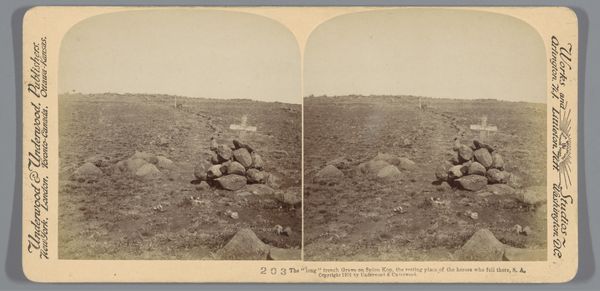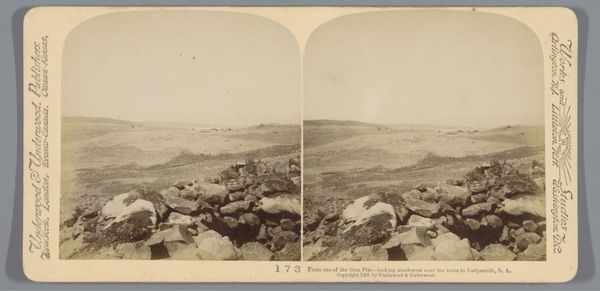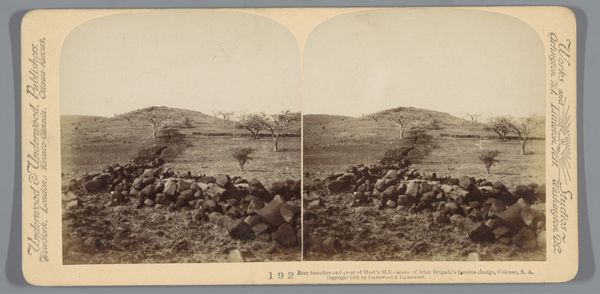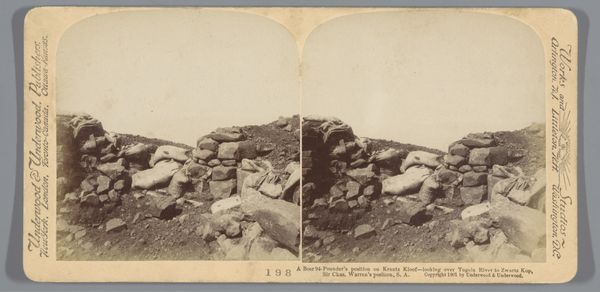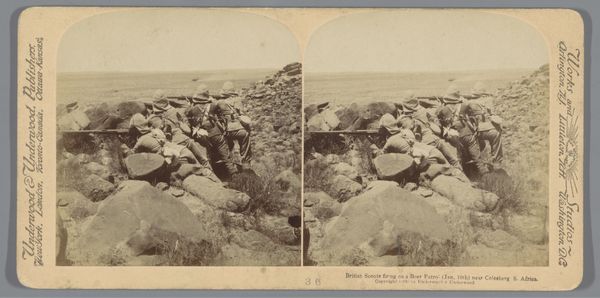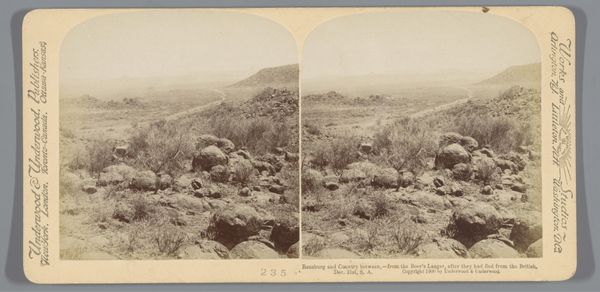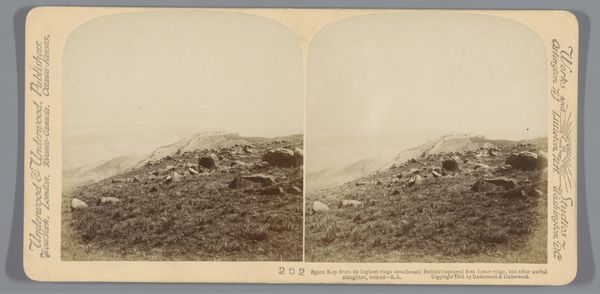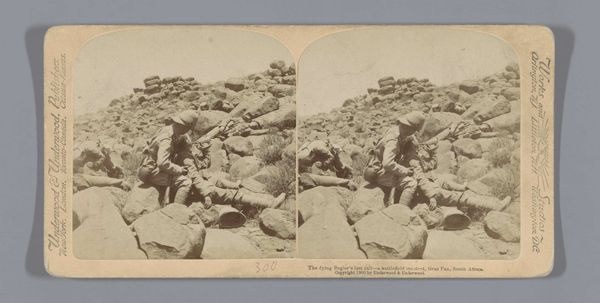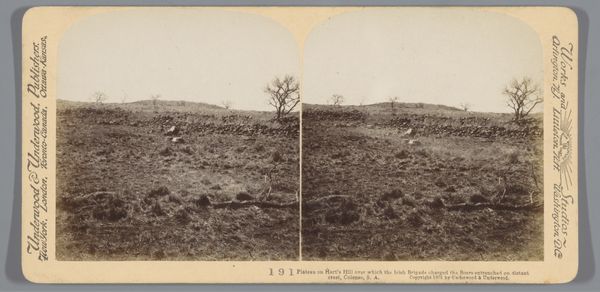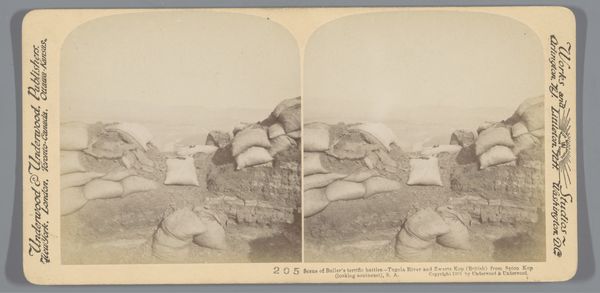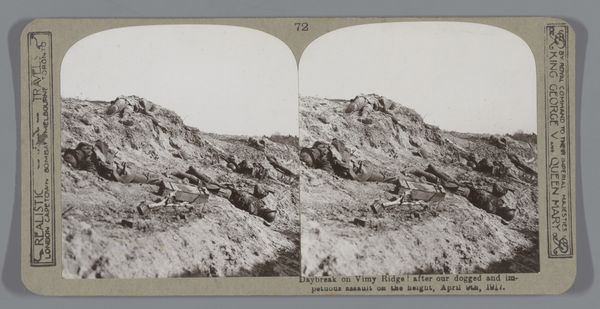
photography, gelatin-silver-print
#
landscape
#
photography
#
gelatin-silver-print
Dimensions: height 88 mm, width 177 mm
Copyright: Rijks Museum: Open Domain
Curator: Here we have an anonymous gelatin-silver print titled “Strijdtoneel van de slag van Belmont, Zuid-Afrika”, taken around 1900. It’s a stereoscopic view of the aftermath of a battle during the Second Boer War. Editor: My first thought is of stark emptiness. The composition, with that low stone wall dominating the foreground, makes me feel incredibly small in the face of such a barren landscape. The monochrome really drives home that feeling of desolation. Curator: Yes, the symbolism of the wall is powerful. It acts as both a barrier and a marker—a testament to conflict, etched into the land. These kind of field fortifications appear in the archetypes of sieges and battlements, symbolizing human effort in response to chaos and aggression, attempts at a constructed safety, always fleeting and vulnerable. Editor: Interesting to think of it in terms of archetypes. To me, it highlights the crude, almost ad hoc, nature of warfare at that time. These are not finely crafted ramparts; just a pile of rocks providing minimal protection. It makes me think about the labor, the quick scramble to build something from what was at hand. It is a raw, utilitarian object created in immediate and chaotic circumstances. Curator: Exactly, the hurried nature of its creation speaks volumes about the anxieties of war. Note, too, how that wall bisects the scene; on one side are remnants, on the other a seemingly endless landscape, inviting consideration of time, consequences, and erasure. Editor: That connection between urgency, effort and vast time feels spot on. The choice of gelatin silver prints feels pertinent, doesn't it? The industrialization of photographic production in the late 19th century meant images of conflict were more easily disseminated. In a sense, that labor – in capturing and reproducing the scene for a mass audience – contributed to the war effort itself. Curator: Precisely! By circulating these kinds of images, certain visual ideas took root. Returning to your original thought, though: emptiness. In Eastern symbolism, for instance, emptiness represents potential – an opportunity for renewal. I find myself wondering if viewers in 1900 experienced similar thoughts, as their understanding of geopolitics shaped how they absorbed such photographic images. Editor: It’s a haunting photograph, certainly, and understanding something of its historical production allows a deeper consideration of the image itself as an act of labor and representation of labor—labor lost. Curator: A resonant observation indeed, especially considering the weight that conflicts continue to exert on culture.
Comments
No comments
Be the first to comment and join the conversation on the ultimate creative platform.
